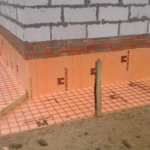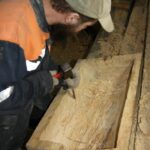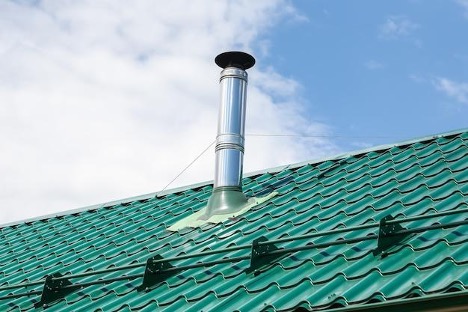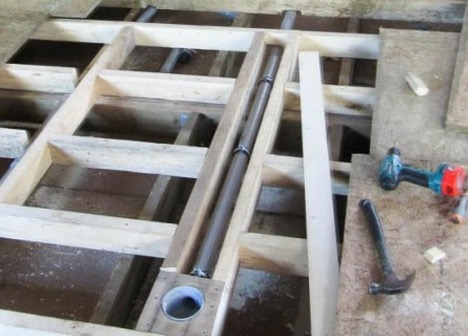Insulating a wooden log house with polystyrene foam from the outside: is it possible, pros and cons
Many owners of wooden houses are wondering whether it is possible to insulate a wooden house with foam plastic from the outside. The answer is yes, but requires detailed consideration. Polystyrene foam, due to its thermal insulation properties, can be used to insulate wooden houses, however, when using it, it is necessary to take into account the characteristics of wooden structures.
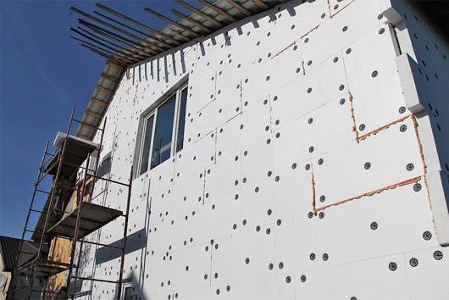
The content of the article
Technical aspects of insulation
Insulating a wooden house, especially one made of timber, is a set of measures that require a careful approach to technical aspects. This is due to the unique properties of wooden structures, as well as the specific interaction of wood with external insulating materials, such as polystyrene foam or expanded polystyrene.
The first key aspect of insulation is ensuring proper moisture protection and vapor permeability. Wood, as a natural material, is prone to moisture accumulation, which can lead to its destruction. When insulating a wooden house with foam plastic from the outside, it is important to use vapor barrier materials that prevent the penetration of moisture from the outside, but at the same time allow the walls to “breathe.” This will ensure the safety of the wooden elements of the house and prevent the occurrence of rot and mold.
The second aspect concerns the thermal expansion and contraction of materials.Wood and foam plastic have different coefficients of thermal expansion, which can lead to cracks or deformation of the insulating layer under conditions of temperature fluctuations. Therefore, when installing insulation, it is necessary to provide compensation gaps that will allow the materials to expand and contract without compromising the integrity of the structure.
The third important aspect is ensuring adequate ventilation. External foam insulation can prevent natural air exchange in wooden walls, which increases the risk of condensation and moisture accumulation inside wall structures. To prevent this problem, a system of ventilation ducts or gaps should be provided to ensure air circulation and removal of excess moisture.
These technical aspects are key to ensuring the durability and efficiency of insulation of a wooden house, guaranteeing the comfort and safety of its occupancy.
Pros and cons of insulating a wooden house from the outside with foam plastic
The process of insulating a wooden house from the outside with foam plastic includes not only the application of insulating material, but also ensuring proper ventilation, as well as protection from moisture and external influences. It is important to ensure that the wooden structural elements remain dry and do not rot.
Advantages:
- polystyrene foam provides good thermal insulation, helping to reduce heat loss;
- foam insulation does not require specialized skills and can be done with your own hands;
- polystyrene foam is one of the most affordable insulation materials on the market.
Flaws:
- polystyrene foam restricts the natural exchange of air in the walls, which can lead to moisture accumulation and mold;
- polystyrene foam is not an environmentally friendly material, and its disposal can be problematic;
- The appearance of a house insulated with foam plastic may differ from the traditional appearance of wooden houses.
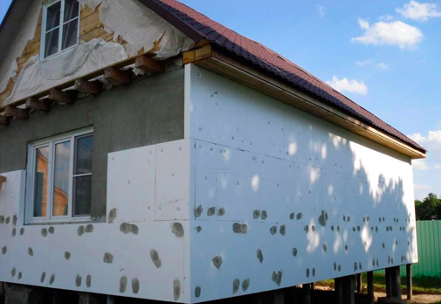
Recommendations for insulating a wooden house with foam plastic
In order to properly insulate a wooden house from the outside with polystyrene foam, you should follow certain recommendations:
- Carefully prepare the surface of wooden walls before applying insulation.
- Provide a good vapor barrier to prevent moisture from penetrating the walls.
- Install ventilation gaps to allow air circulation and prevent condensation.
- Use additional protective coatings to improve the appearance and provide additional weather protection for the foam.
Mistakes when insulating a wooden log house with polystyrene foam
When insulating a log house with polystyrene foam from the outside, it is important to avoid a number of common mistakes to ensure the effectiveness and durability of the insulation. Mistakes can lead to serious problems such as damage to the home's structure, mold, and poor insulation properties.
- Neglecting high-quality cleaning and preparation of the external walls of a wooden house before insulation can lead to poor adhesion of the foam to the wall. And, as a result, this will lead to its detachment in the future.
- Lack of a proper vapor barrier layer can lead to moisture accumulation inside the walls. In the long term, this promotes wood rot and mold growth. In addition, insufficient ventilation under the insulating layer enhances this effect.
- Using too thin a layer of foam will not provide the required level of insulation. While a layer that is too thick can lead to excessive heating of the walls.As a result, thermal bridges are created.
- Without taking into account the differences in the coefficients of thermal expansion of wood and polystyrene foam, you may encounter the problem of deformation and cracks both in the insulation and in the walls of the house.
- The use of unsuitable fasteners or their incorrect installation can lead to loosening of the foam and its subsequent detachment from the wall.
- The absence of a protective layer, such as stucco or siding, can cause the foam to wear out quickly. This occurs under the influence of atmospheric factors and ultraviolet radiation.
By avoiding these mistakes, you can significantly increase the efficiency of insulating a wooden log house. This will also ensure durability and comfortable living.
Conclusion
Insulating a wooden log house with polystyrene foam from the outside is an affordable and effective solution for increasing the energy efficiency of a building. However, it is necessary to take into account all the pros and cons of this type of insulation and strictly follow technological recommendations. This will ensure long-term safety and comfort in your home.

